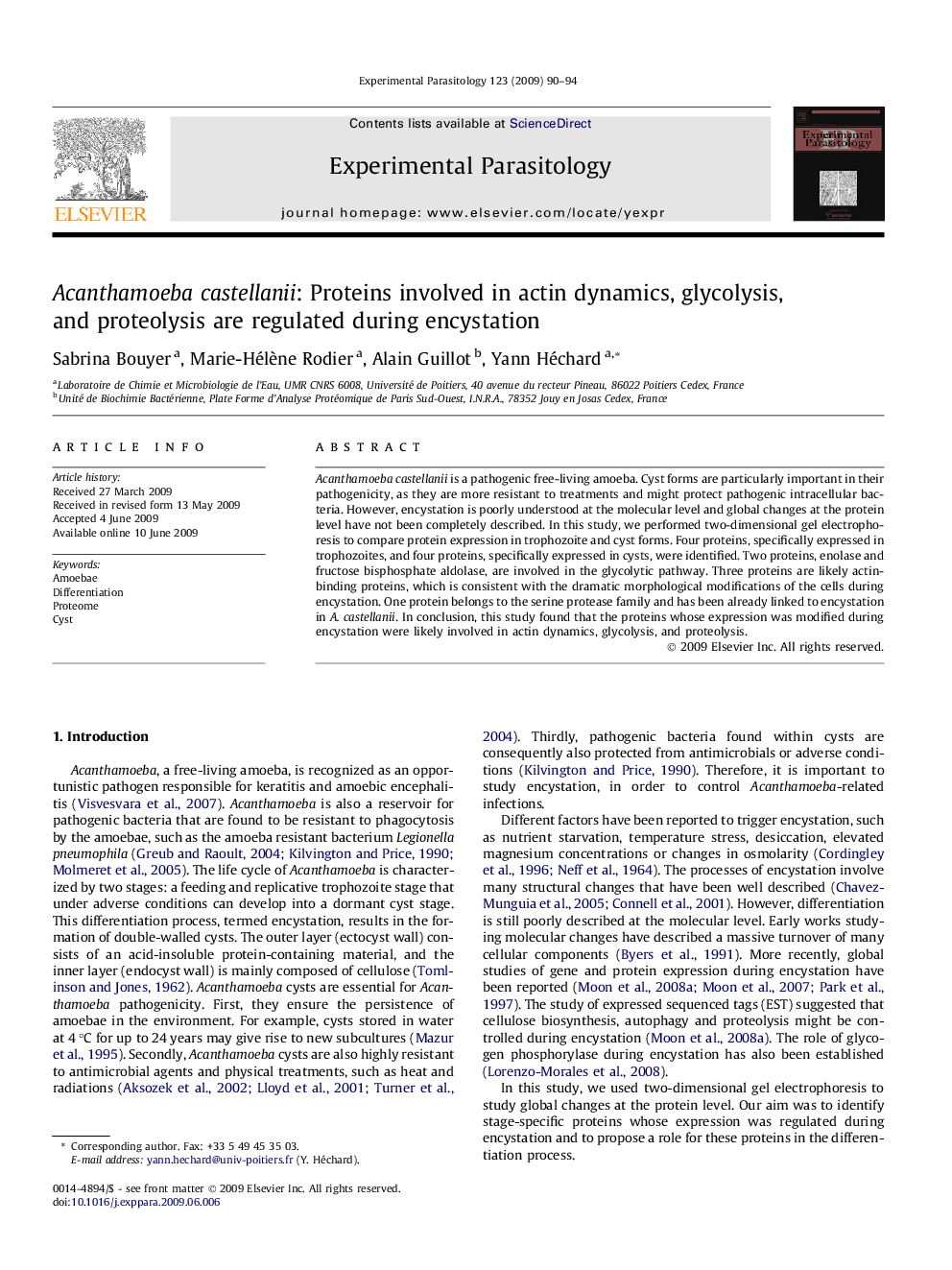| Article ID | Journal | Published Year | Pages | File Type |
|---|---|---|---|---|
| 4371880 | Experimental Parasitology | 2009 | 5 Pages |
Abstract
Acanthamoeba castellanii is a pathogenic free-living amoeba. Cyst forms are particularly important in their pathogenicity, as they are more resistant to treatments and might protect pathogenic intracellular bacteria. However, encystation is poorly understood at the molecular level and global changes at the protein level have not been completely described. In this study, we performed two-dimensional gel electrophoresis to compare protein expression in trophozoite and cyst forms. Four proteins, specifically expressed in trophozoites, and four proteins, specifically expressed in cysts, were identified. Two proteins, enolase and fructose bisphosphate aldolase, are involved in the glycolytic pathway. Three proteins are likely actin-binding proteins, which is consistent with the dramatic morphological modifications of the cells during encystation. One protein belongs to the serine protease family and has been already linked to encystation in A. castellanii. In conclusion, this study found that the proteins whose expression was modified during encystation were likely involved in actin dynamics, glycolysis, and proteolysis.
Keywords
Related Topics
Life Sciences
Immunology and Microbiology
Parasitology
Authors
Sabrina Bouyer, Marie-Hélène Rodier, Alain Guillot, Yann Héchard,
